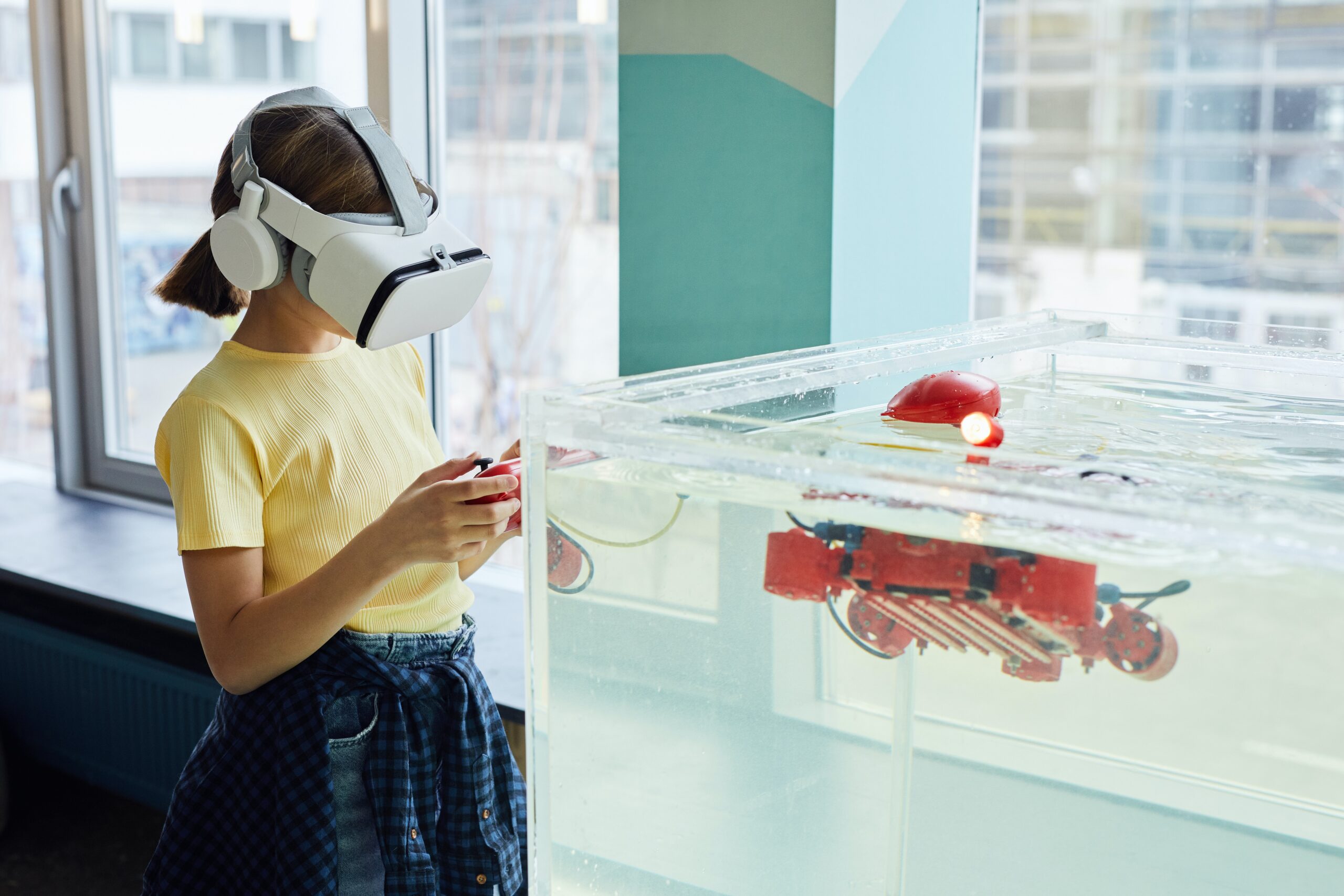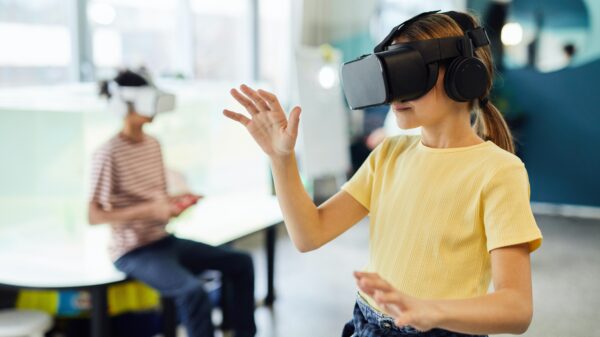Virtual reality has been a hot topic for years, captivating us with its ability to transport us to new worlds and experiences. From gaming to education to therapy, the potential applications of VR are endless. But what does the future hold for this rapidly evolving technology? In this post, we’ll explore how virtual reality is expanding horizons and experiences in ways we never thought possible. Get ready to be blown away by the possibilities!
Introduction to Virtual Reality (VR)
Virtual reality (VR) is a computer-generated simulation of a three-dimensional (3D) environment that can be interacted with in a seemingly real or physical way by a person using special electronic equipment, such as a headset with a screen inside or gloves fitted with sensors.
This technology is used to create immersive environments for gaming, education, social networking, and other applications. The Future of Virtual Reality: Expanding Horizons and Experiences explores how VR is being used today and looks at the potential for this technology in the future.
Current State of VR and Its Potential
Virtual reality is still in its early stages, but the potential for VR is great. Currently, VR is used primarily for gaming and entertainment purposes. However, with the advancement of technology, VR has the potential to be used for much more.
Some of the potential uses for VR include: education, training, healthcare, therapy, productivity, and much more. For example, VR can be used to create immersive educational experiences that allow students to learn in a more hands-on way. Additionally, VR can be used for training purposes in various fields such as healthcare and manufacturing. And finally, VR has been shown to be effective in various therapies such as treating anxiety and PTSD.
The current state of VR is exciting but there is still a lot of room for improvement. With continued development, VR has the potential to change many aspects of our lives for the better.
Types of VR Technology
The most common type of VR technology is the headset. A headset is a device that you wear over your eyes and ears, immersing you in a digital environment. The best headsets on the market today are the HTC Vive, Oculus Rift, and PlayStation VR. These headsets use high-resolution displays and advanced sensors to track your head movement and provide an immersive experience.
Another type of VR technology is haptic feedback. Haptic feedback is when you feel physical sensations while using VR. This can be anything from vibration to temperature changes. Haptic feedback helps make the VR experience more realistic and immersive.
There is augmented reality (AR). AR is similar to VR, but instead of placing you in a completely digital environment, it augments your real-world surroundings with digital content. AR has been used in video games for years, but it is only now starting to become popular in other areas such as education and business training.
Benefits of VR
The benefits of virtual reality (VR) are vast and varied. VR can transport users to other worlds and experiences, immersing them in sights, sounds, and sensations that would be otherwise impossible to experience. This technology has the potential to revolutionize many industries, from education and healthcare to entertainment and gaming.
Some of the most promising applications of VR are in the field of medicine. VR can be used to provide exposure therapy for patients with phobias or post-traumatic stress disorder (PTSD). It can also be used for pain management, allowing patients to distracted from their pain by immersive experiences. In the future, VR may even be used for surgery, giving surgeons a realistic view of the patient’s anatomy before they even make the first incision.
VR is also being used in education as a way to engage students in new and innovative ways. VR can take students on field trips to far-flung locations or back in time, allowing them to explore history firsthand. It can also be used for more practical purposes like teaching anatomy or practicing surgery. In the classroom, VR has the potential to greatly enhance the learning experience by making it more interactive and engaging.
The entertainment industry is another area where VR is starting to make its mark. Movies and video games are increasingly using VR technology to immerse viewers in their narratives. And with the advent of affordable consumer-grade VR headsets like Oculus Rift and HTC Vive, it’s only a matter of time
Challenges Posed by VR
Virtual reality has been growing in popularity in recent years, with advances in technology making it more and more accessible. However, there are still some challenges that need to be addressed before VR can truly become mainstream.
One of the biggest challenges is the cost of VR headsets. While there are some cheaper options available, the high-end headsets that offer the best experience can be very expensive. This barrier to entry may limit the adoption of VR by consumers.
Another challenge is motion sickness. Some people experience nausea and dizziness when using VR headsets, which can obviously be a big turn-off. The good news is that this is something that developers are aware of and are working to improve.
There is the issue of content. While there are already a number of great VR games and experiences available, there is still a lack of really killer app that will convince people to buy into VR. This is something that will likely come with time as more developers create content for the platform.
Creative Applications of VR
Virtual reality technology is still in its infancy, but it is already being used in a variety of creative ways. For example, VR is being used to create immersive experiences that allow users to explore different environments and interact with virtual objects. Additionally, VR is being used to create educational experiences that can be used to teach people about different topics. VR is also being used to create entertainment experiences that are interactive and engaging.
The Future of VR
It is safe to say that the future of virtual reality looks bright. With advancements in technology, VR is becoming more and more realistic and immersive. We are now able to experience things that were once impossible, like flying or swimming with dolphins. And as VR continues to evolve, the possibilities are endless.
We can expect VR to become even more realistic and life-like in the future. Technology will continue to improve, making it possible to create even more realistic environments and experiences. We will also see a continued expansion of content, with new and innovative experiences being created all the time.
There is no doubt that VR will continue to grow in popularity. More and more people are discovering the amazing potential of this technology. And as VR becomes more accessible and affordable, we can expect even more people to jump on board.
So what does the future hold for VR? Exciting new experiences, continued growth, and limitless possibilities. We can’t wait to see what comes next!
Conclusion
All in all, virtual reality is a technology that has the potential to revolutionize our lives and open up new possibilities for entertainment, education, and more. With the advances being made each day in this field, we can only imagine what amazing experiences lie ahead of us. Virtual reality already offers so much at its current stage of development, and it’s exciting to think of all the ways it can be used to expand our horizons even further.










